Jul 012011
The SR-71 “trainer” on display at the Hill Aerospace Museum.
The left side of the cockpits. There is a small chunk taken out of the leading edge chine, revealing a white fibrous substance. I can’t say whether this is the original fiberglass material that composed a good portion of the leading edge, or just some later “spackle.”
The pointy end of the plane, showing pitot tube and air data sensor.
Where the piot assembly meets the nose of the plane.
Right side of the nose, showing the heads of the bolts that hold it all together
(This answers THIS CONTEST)
9 Responses to “SR-71 in Unneccesary Closeup”
Sorry, the comment form is closed at this time.
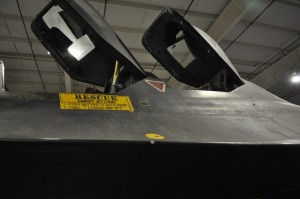
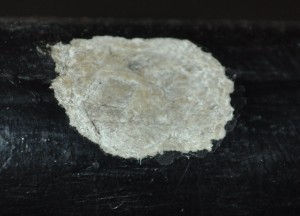
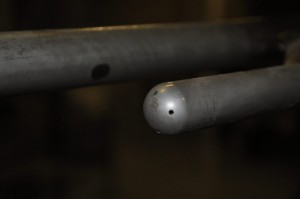
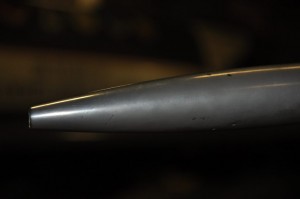
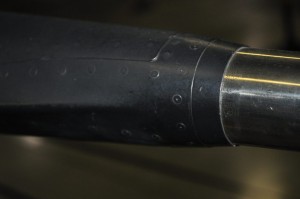
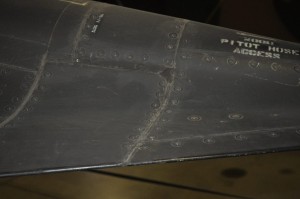
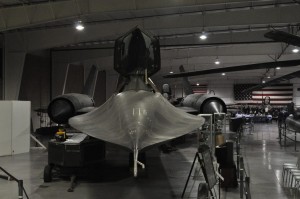
[…] over… answer HERE. Posted by admin at 3:11 […]
Nice pix, Scott!
An amazing looking aircraft… even more considering this dates from the time of Caddies with huge tailfins and Elvis before his fat jumpsuit days!
The hemispherical end on the air data sensor is odd from a drag and heating point of view; does it ride inside of the shockwave created by the pitot tube?
A hemispherical nose like that would produce some nasty shock waves at mach 3, producing hot spots wherever the shock waves hit. The air data sensor itself wouldn’t have all that severe of heating with the attached flow being subsonic behind the shock wave.
staying inside those oblique shock waves
The whitish material visible in the chine leading edge sounds like the descriptions I’ve read of the radar transparent material they used, which was supposed to be something like fiberglass…the Bomarc missile I saw back in 1975 had a eggshell white radome on it that looked like some sort of spun ceramic with a fused ceramic or glass outer layer on it.
That might have been where they got the chine and wing wedges material from, because I can’t see any type of resin or plastic that could withstand the heat on the leading edges at operational speed; spun and fused quartz glass could take those temperatures.
You can get an idea of what the edges of the wings and chines saw-teeth looked like minus the composite wedges in these photos of the Convair Kingfish radar pole model; since the wedges were supposed to be transparent to radar, they just left them off the model:
http://www.testpilot.ru/usa/convair/kingfish/img/kingfish_02.jpg
http://www.testpilot.ru/usa/convair/kingfish/img/kingfish_04.jpg
Radar was to pass through the composite wedges and reflect back and forth inside the sharply angled saw-teeth till it was dissipated before reaching the inner point of the triangle.
Since this technology was pretty much identical on the A-12 and Kingfish designs, I always thought the concept was given to both Lockheed and Convair by the government as a piece of classified technology they could use on their submission designs for a U-2 successor.
It would be interesting to know if the inside of the saw-teeth were coated with any sort of RAM.
Whatever the case, it took some work to get the bugs worked out of the technology – on its first test flight the prototype A-12 shed several composite wedges.
The nose boom looks like it is unpainted, but not titanium…something like the Inconel-X nickel/chromium alloy used on the X-15?
The Blackbirds looked really cool in their all-black “Ironball” RAM finish, but I always thought the natural titanium/black finish looked even cooler:
http://www.fas.org/irp/program/collect/d21lnch.jpg
I made a model of one finished like that way back, and it looked really sharp.
The air data probe is made from Hastelloy and is uncoated. It was chosen because of its high-temperature, high-stress resistance.